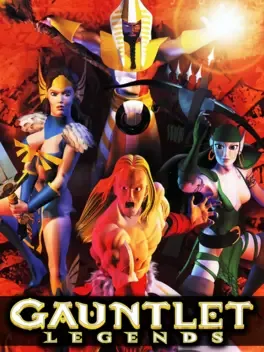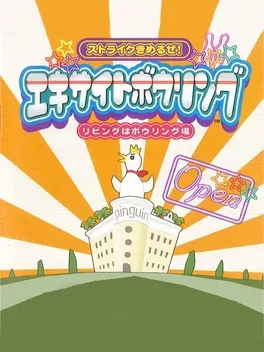Popular games published by company Epoch Co., Ltd.

Gauntlet Legends is an arcade game released in 1998 by Atari Games. It is a fantasy themed hack and slash styled dungeon crawl game, a sequel to 1985's popular Gauntlet and 1986's Gauntlet II and marks the final game in the series to be produced by Atari Games. Its unusual features for an arcade game included passwords and characters that could be saved, enabling players to play over the course of a long period.

"TV Vader" is an arrangement of Taito's "Space Invaders" released by Epoch as a home video game in 1980. It is an early video game machine classified as the first generation. 8 horizontal x 6 rows of invaders appear, but due to performance limitations, only the front row invaders are displayed. Although it was a low-performance game machine, it successfully reproduced the atmosphere of Space Invaders. In 1982, it was ported to Cassette Vision under the name "Battle Vader".

The sequel to Otogi no Kuni no Pendant. You play as a girl from the Ivory Rabbit family, embarking on an adventure to restore the "colors" that have vanished from the fairy tale world.

System 10 is a home video game machine released by Epoch in 1978. Developed jointly with NEC and equipped with NEC's µPD770C chip. It has 10 built-in games, and you can play ponclone games such as tennis, ping-pong, and soccer, as well as shooting games using a gun-shaped controller. It is an early home-use game machine classified as the first generation. Later, a cheaper version of "System 10 M2" was also released. There is also an OEM model called "Toshiba Video Game TVG-610" which uses the same IC and has the same content developed by Epoch and released by Toshiba.

"Excite Bowling" is an experience game released by Epoch in 2002. It was released as one of the "experimental games" (Taikan game) series. It is a hardware-integrated plug-and-play game that uses XaviX technology. Later, "XaviX Bowling", which can be said to be the successor software, was released on "XaviXPORT", a hardware dedicated to XaviX technology.